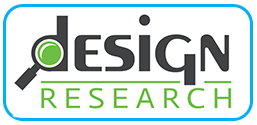“After searching for data on home décor styling trends, Assortment Styler was the only report with details on how Americans decorate their homes. The report gave us the competitive advantage across multiple titles of knowing the top home décor styles and historical and future trends.”
Design research is our name and our forte’. We offer two contexts for design research – decorative design evaluations and functional design evaluations. For decorative design we have a proven, proprietary methodology. In meta- research on long term client sales, we have been able to establish that designs that we test with consumers and recommend for introduction see a 2.5 – 3.0 fold higher sales volume than designs that are not tested and are introduced based on management judgment. This relationship holds true across a wide variety of product categories where design and decoration is the leading reason for purchase:
- Small Kitchen Appliances
- Cookware and Bakeware
- Kitchen Tools & Gadgets
- Food Storage and Kitchen Organization
- Dinnerware, Flatware, Glassware, Barware
- Table Linens
- Wall coverings
- Window treatments
- Bedding and other fabrics
- Upholstery
- Floors, cabinets, counters and tile surfaces
- Decorated rooms or vignettes
- Bath and Kitchen Fixtures
- Furniture
- the list goes on!
So how do we do it? The keys lie in getting to the correct consumer (see Design Segmentation Studies) and then asking the right questions. We know that consumers don’t have a language for design, but they do know what they like. Thus we have to ask a sufficiently large number of people what they like. (Qualitative research – such a focus groups – does not work for design testing – it has to be quantitative.) With samples of usually 150 or more we can identify not only the most liked designs but also the least liked designs. Clients introduce the most liked designs and use the feedback from the research to make improvements to the middling designs, thus saving money and time on design investment. Our research is also fast - typically three weeks to a final report.
We have often made the case to prospective clients that they can justify investments in design testing as a double-edged insurance policy. On the positive side, the research will identify the strongest designs for introduction. This testing methodology has been proven to bring a 2 to 3 fold higher sales volume than introductions that have not been tested. Knowing which designs to run with, offers significant incremental sales potential. Further, the research investment is justified if only one design that was going to be introduced is identified as too weak to move forward with. Think of the savings of not tooling, producing, shipping, packaging and selling a weak design. We once worked out with one client that the cost of research that identified weak products for elimination amounted to 1% of the cost of proceeding with those products. 1% is really inexpensive insurance.

